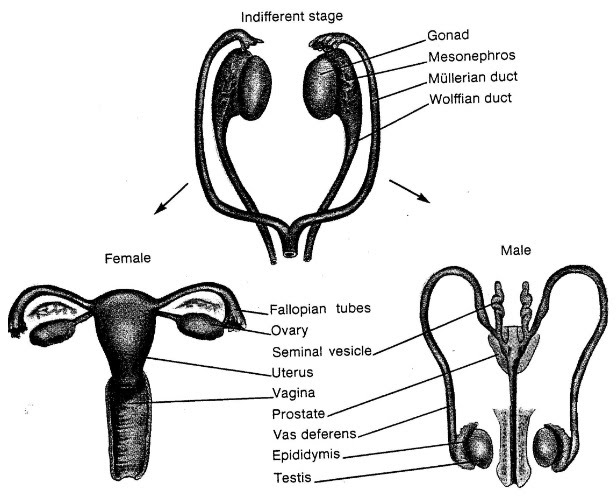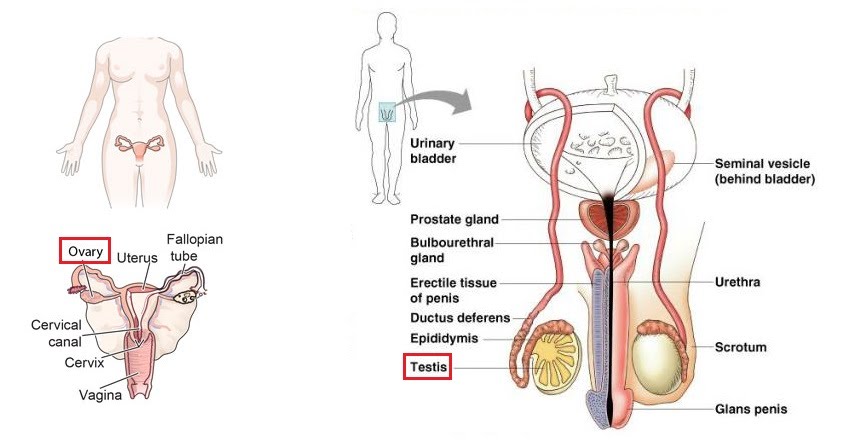Human gonads
Gamete development
Sexual intercourse
Fertilisation
Early embryo development
Human gonads
The gonads – ovaries and testes – produce gametes, the haploid sexual reproduction cells made through meiosis, which upon fertilisation complete the chromosome set and start the development of a new human. The gonads are part of the reproductive system which contains other organs with varying functions to assist sexual reproduction.

Gonads differentiate before birth in humans, into testes or ovaries.

Ovaries produce egg cells released one (sometimes two! or many more if induced by hormones e.g. IVF) at a time, which travel from each ovary (they take turns to release an egg) down the Fallopian tube towards the uterus. The egg can undergo fertilisation by a sperm cell found in the Fallopian tube, and develop into a zygote, attach to the upper lining of the womb (endometrium) and start pregnancy; or be shed alongside part of the endometrium two weeks after ovulation (egg release from the ovary) – this is…
